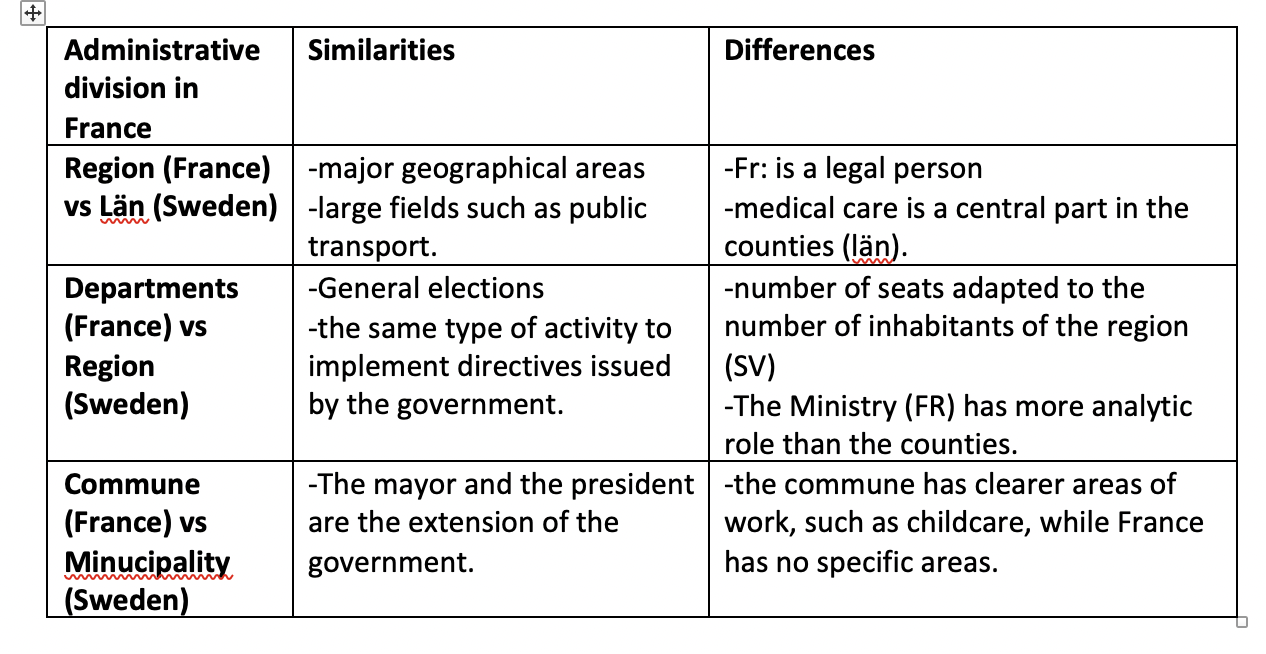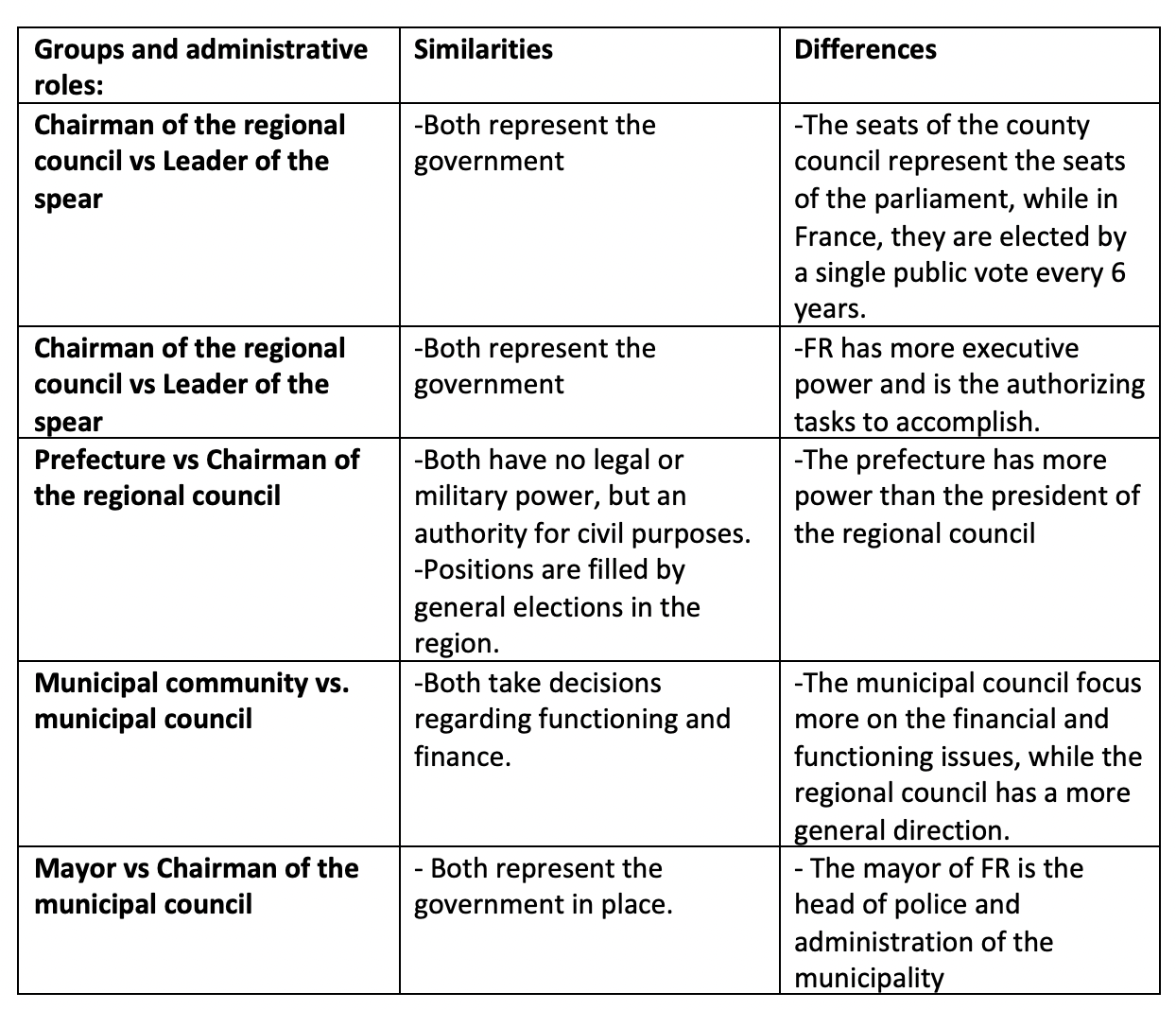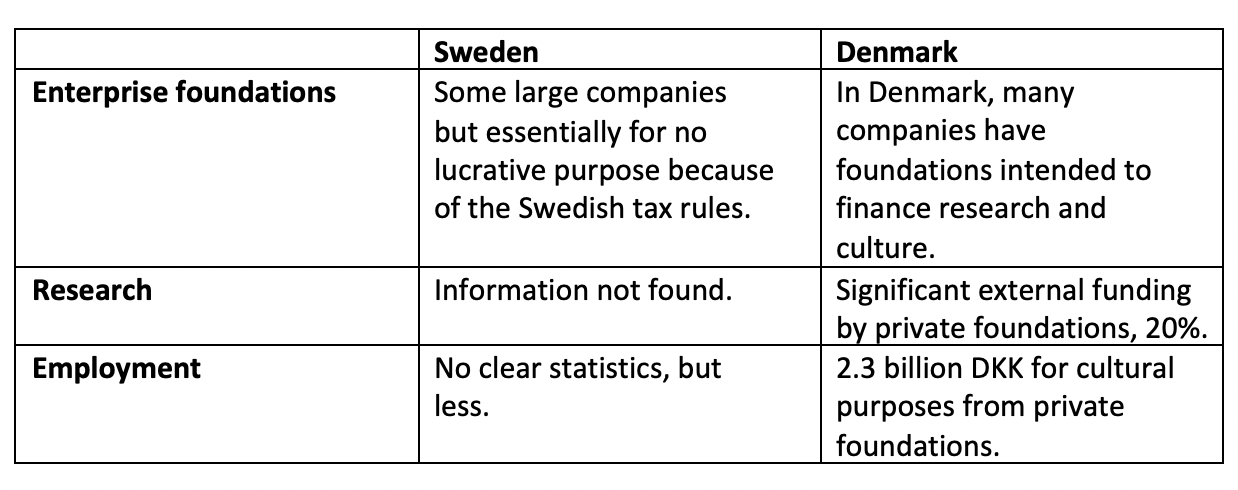
Exchanges with the Swedish Embassy in Paris on the administrative organization of the two countries for the European Days 2023 in Malmö - by Christian De Boisdeffre, General Administrator of Public Finances (France)
The Swedish administrative system:
- Counties (län): The administrative parts of Sweden are divided into different counties, 21 in total. For each county, there is a region responsible for health care, infection control, public transport and culture. Each county has an administrative council which represents the Swedish government. The county governor (civil profession) coordinates government activities in the county. He is appointed by the government and also heads the county administrative council.
- Region: in a region, there is a regional council which is considered as the "government" of the region. It coordinates and manages the administration of the interests of the region and supervises the activities of the other councils. The regional council is the highest decision-making body at the regional level and, with elections that represent the people, it also makes decisions on the most important issues in the region. The regional council is directed by a presidium composed of a president and one or more vice-presidents. The Bureau is responsible for strategic planning of the Council's work, working methods and liaison with the Executive Council and political party group leaders. The regional council appoints the members of the regional council and has ultimate responsibility for the finances and direction of the organization. The regional council prepares the questions that will be raised and dealt with by the regional council. A regional councilor is responsible for presenting problems to the regional council and must respond to questions and interpellations from the municipal council. Some regional councils have a prefix in front of their title, such as financial region council or health region council.
- Municipality: the region is divided into smaller areas called municipalities, which take care of local tasks such as childcare, schools, water supply and sewage disposal, as well as care for the elderly. The municipal council is the main political body of the municipality, where decisions on the direction of activities and finances are taken. The municipal council is the apex of the municipal commission and its role is to elect members and make decisions on the most important issues of the municipality. The president of the municipal commission is a municipal councilor from the political bloc that won the elections.
Comparison between France and Sweden:


Foundations in Sweden:
According to Statistics Sweden, there are approximately 51,000 foundations in Sweden, with a total wealth of 24 billion Swedish crowns. A foundation has no members or owners, but owns itself as a "legal entity". The board of the foundation decides where/to whom/what part of the assets should go and the president of the foundation indicates how the assets should be used and for what purpose (what activities, what possible beneficiaries). According to SCB, foundations make up about 8% of all business forms in 2020.
Due to tax rules, most foundations are non-profit in Sweden, but there are foundation-owned companies, such as Mercuri Urval, Philips and the Ikea sphere, which consists of complex sets of companies such as groups and subsidiaries.
There are foundations of which the State is a co-founder or which it has entirely created. Foundations founded solely by the state are subject to stricter regulation, which means that they are less independent than others.
There are several types of foundations in Sweden (public utility foundations):
- Stipendiestiftelser: in the form of scholarships for students.
- Collection foundations: one or more trusts organize the receipt of money after being solicited; this foundation is distinguished from the others by the fact that it does not require an endowment.
- Collective agreement foundations: the labor organization organizes and uses the foundation for specific purposes. In this case, the foundation is created by a collective agreement, which is different from other foundations.
- Provident foundations (pension funds): created by an employer to ensure the payment of pensions to its employees. The foundation does not provide a pension but only guarantees the employer's pension commitments.
- Staff foundations: created by employers to guarantee and promote social protection other than pensions, salaries or other benefits that the employer is obliged to provide to its employees.
Comparison between Danish and Swedish foundations: Corporate foundations
Danish foundations are more active in different businesses, while there are hardly any foundation-related businesses in Sweden. The ones that do exist (and are mentioned above) are companies that have been spun off to "lighten" their tax position. Today, it is the Danish foundations that have contributed to the construction of the cultural and architectural landscape in Denmark, which is not the case in Sweden.
In 2020, private foundations disbursed DKK 2.3 billion for cultural purposes in Denmark. In comparison, public funding is much larger, but unlike private foundations, the majority of public funding is tied to operating costs. Consequently, artists and arts institutions often depend on the support of private foundations to achieve their cultural goals.
Initially, this evolution is explained by the fact that public financing has become more and more competitive. But in recent years, another trend has been equally, if not more, important to the move towards more external funding, namely the increase in funding from private foundations. It is a great advantage for Denmark to have an exceptionally high number of large non-profit foundations which distribute funds for research.
There is no doubt that the fact that Danish research receives up to 20% of its total funding from private foundations is a great advantage. In the current funding environment, research institutes would find it difficult to do without it. It also reflects that the companies behind the foundations are doing well.

Sources :
French administrative system:
La réforme territoriale | Gouvernement.fr
Swedish administrative system and Swedish foundations:
Den svenska förvaltningsmodellen - Regeringen.se
Så styrs Kamprads hemliga miljardstiftelse | SvD
Danish foundations:



